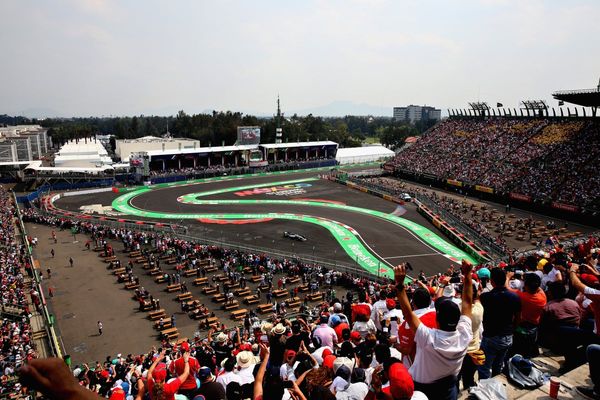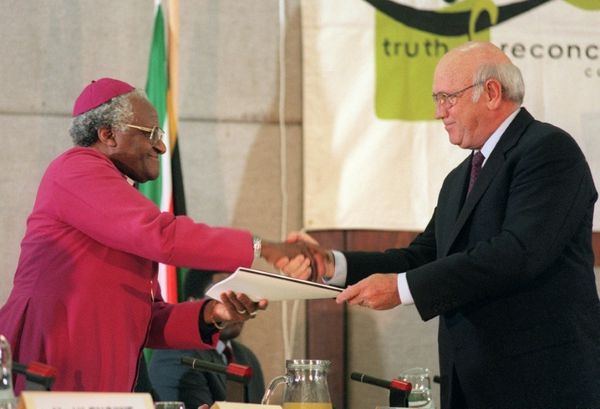
The NFL draft sells hope. In fans’ imagination draft prospects are anything they want them to be. When the draft starts in Las Vegas on Thursday, fans can dream that their team is one pick, one draft class away from becoming a Super Bowl contender.
That is the kindest reading, the one that views the draft as a way to ensure competitive balance, of the league legislating parity. Another reading: it’s an exercise in wage suppression, giving as much money as possible to veterans at the expense of the young pups coming into the league. Some may say that it also serves as a way for the league and its franchises to exert control over new employees from the outset: they don’t get to choose where they’ll work or live; they’re sent to whatever outpost is dictated to them, their income decided by the rookie wage scale.
That imbalance has shifted somewhat over the last 18 months. College football is in a state of flux. The advent of Name Image and Likeness (NIL) and the option to transfer schools penalty-free have given student-athletes a degree of agency. Soon, college athletes could unionize. And if they do, the relationship between collegiate athletics and professional sports will change.
But the power still lies with the NFL and the colleges. At present, college football acts, in essence, as the NFL’s minor league system, but without any of the associated costs. That structure works for the schools and the NFL: The league gets to bring in ready-made stars, ones churned out by the college football machine; that machine has power because players have to stay in college for at least three years before turning professional.
The NFL’s idea of overhauling the process is having players taken to the draft night podium on boats rather than walking. But there are plenty of structural changes the NFL could make to ensure a fair deal for their new entrants while maintaining its guise of parity.
An allocation pool
How about switching from a draft order to an allocation pool? Rather than handing teams draft picks in sequential order, they’re handed a budget to spend how they wish. It is then up to the team to decide how to allocate that budget, and up to the draftees to determine which is the best landing spot for them, weighing up the cash, scheme fit, culture, and all the traditional trappings that go into a free-agent’s decision.
The league could look at two options. A weighted system that gives the team with the worst record in the league the largest pool of money to spend in the draft, with a sliding scale down to the Super Bowl champion, or a flat-rate system that hands every franchise the same amount of money. The former is the most appealing as a spectacle: Would a high-caliber quarterback turn down the Lions, for instance, in favor of taking less money to head to New Orleans? What new market inefficiencies would pop up? Is spending big on three-to-four high-profile players better than adding 13 rookies in one go.
There are obvious counterarguments. The league may lose the razzamatazz of its primetime special where the picks flow in order. But that could be replaced with a new kind of experience. Who wouldn’t love the spectacle of the Star Quarterback of Tomorrow throwing a Jets hat to the floor to don a Falcons cap after a last-second sales pitch from Arthur Blank?
A draft lottery
Try as the Dolphins and Browns might, it is hard to ‘tank’ – intentionally losing games to get a better draft position – in the NFL. And even if a team wants to tank and does tank – perhaps incentivizing their coach to do so – there are no guarantees.
In basketball, where tanking first rose to prominence, the highest concentration of Hall of Fame talent comes from the top picks in the NBA draft. Given that there are only 10 players on court at any given time, star players in the NBA exert more control on the outcome of a game than in any other major team sport. It’s why tanking is considered a viable strategy, and why the NBA felt the need to institute (and then amend) a draft lottery, offering percentage chances at the top slot based on a team’s record the previous year. No longer can a team tank to guarantee the top pick.
In the NFL, the only player with a similar sphere of influence is the quarterback. Tanking for a high-level quarterback is smart, in theory. But it requires teams to be sure who the high-level quarterbacks are. All indications suggest teams are guessing just as much as fans when it comes to which prospects turn out to be stars. And even when teams land the sure thing, it’s only one step in the team-building process. Even the best quarterback can only impact the outcome so much compared to basketball stars, who play on both sides of the ball.
Still: In light of the Brian Flores-Hue Jackson allegations leveled at Miami and Cleveland, it would be sensible for the league to cut off any further sense of teams tanking by introducing a lottery system.
Plus, in the league’s quest to hit $25bn of revenue by 2027, adding a draft lottery would offer another multimillion-dollar TV vehicle.
Changing the age limit
On the surface, the NFL’s age limit makes sense. It requires players to be three years removed from high school before they are eligible for the draft. Unlike baseball and basketball, football is a dangerous, collision-based sport, and the league does not want teenagers being bashed about by grown men.
Yet the restriction is the main reason why the league can use colleges as free minor league clubs – high-schoolers have no choice but to enter the college ecosystem if they want to eventually turn professional. There is no reason why the league could not institute a rule that held players back from playing in the league for three years but made them eligible to be drafted whenever.
Already, teams are lining their pockets with future draft picks in the hopes of landing at the front of next year’s quarterback sweepstakes. The top two quarterback prospects in the country are Alabama’s Bryce Young and Ohio State’s CJ Stroud. Both are ineligible to enter this year’s class but are already on teams’ radars for the 2023 draft.
Young and Stroud could enter the draft this year, sign a contract, work within the practice facility and learn from the team’s veterans but not suit up on Sundays or during contact practices. Whether a team chooses to make that investment – and the trade-off of passing on someone who could make an instant impact – should be up to the teams and the prospects.
Full free-agency
As much as the NFL’s salary cap is about controlling costs, it’s also about the league’s owners protecting themselves from each other. The one time in the modern era the salary cap was removed, during the 2011 lockout, the owners came to an agreement on a pseudo-cap, shaking hands on a figure as they worked through the new Collective Bargaining Agreement. Jerry Jones and Daniel Snyder ignored it. They just couldn’t help themselves.
The rookie wage scale serves a similar purpose. It is built to ensure owners don’t hand out the kind of contracts that could weight down a franchise for years to come.
That’s all well and good … but where’s the fun in that? Why can’t Jones fork over a $100m deal for college football’s premier pass-rusher if he wants, so long as it fits under the league’s cap? You can make a simple argument for abolishing the draft altogether and shifting to an unfettered free-agent system, where rookies are able to extract their market value in the same way that any other free agent can.







